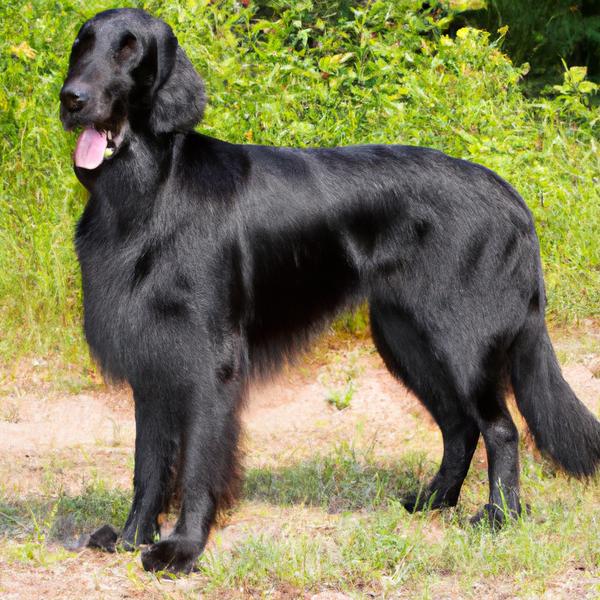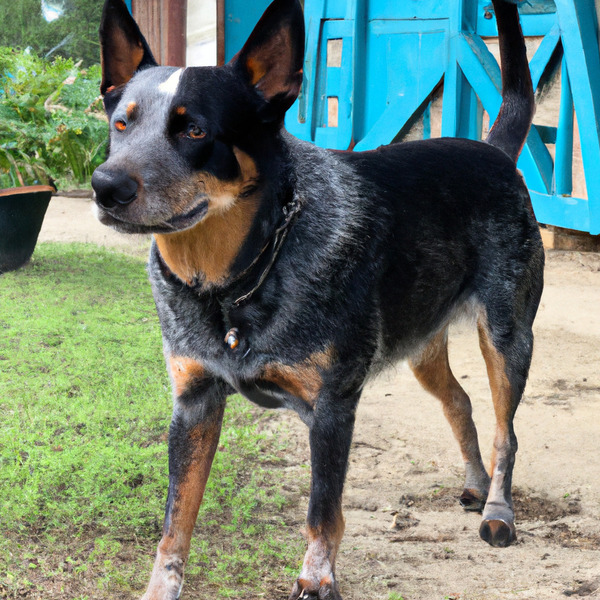Flat-Coated Retriever vs. Texas Heeler: Breed Differences and Similarities
Weight Gain Potential
Which breed eats more: Flat-Coated Retriever or Texas Heeler?
Flat-Coated Retriever has high obesity risk, needs regular exercise and food control to maintain healthy weight.
Texas Heeler has average risk of obesity, needs daily walks and quality diet to maintain healthy weight.
Hypoallergenic
Are Flat-Coated Retrievers or Texas Heelers hypoallergenic, or neither?
Unfortunately, neither Flat-Coated Retriever nor Texas Heeler are hypoallergenic, which may not make them the best choice for dog lovers who suffer from pet allergies.
Temperament
What are the personalities of Flat-Coated Retriever and Texas Heeler dogs?
Friendly
Devoted
Outgoing
Confident
Optimistic
Intelligent
Clever
Stubborn
Obedient
Shedding Level
Do Flat-Coated Retrievers shed more than Texas Heelers, or which breed sheds more, Flat-Coated Retrievers or Texas Heelers?
Flat-Coated Retriever or Texas Heeler dogs are not heavy shedders, but they will lose a significant amount of hair each year. To decrease the amount of shedding, you can regularly brush your Flat-Coated Retriever or Texas Heeler. This will remove loose hair and keep their coat growing in the same direction.
Watchdog Ability
Which dog breed makes a better watchdog, the Flat-Coated Retriever or Texas Heeler?
Choose a Flat-Coated Retriever if you want a top-notch watchdog. This breed takes guarding seriously, and may not require much training, though obedience or guard dog training can improve their skills.
Texas Heelers are decent watchdogs - they'll alert their owner if something seems amiss.
Origin
What is the origin of Flat-Coated Retriever and Texas Heeler dog breeds?
England
United States
Ancestry
What are the origins of Flat-Coated Retriever and Texas Heeler breeds?
retriever, newfoundland water dog
Australian Shepherd and Australian Cattle Dog
Breed recognition
Which kennel clubs recognize/register Flat-Coated Retriever and Texas Heeler?
American Canine Registry
American Kennel Club
America's Pet Registry
Canadian Kennel Club
Dog Registry of America Inc.
Federation Cynologique Internationale
Kennel Club of Great Britain
North American Purebred Registry, Inc.
American Canine Association, Inc.
Australian National Kennel Council
Continental Kennel Club
National Kennel Club
New Zealand Kennel Club
United Kennel Club
Canadian Canine Registry
American Canine Hybrid Club
Dog Registry of America Inc.
Animal Research Foundation
Date of Birth
When were Flat-Coated Retriever and Texas Heeler breeds first developed?
1800s
1970s
Eye Color Possibilites
What are the eye colors of Flat-Coated Retriever and Texas Heeler dogs?
Brown
Brown
Nose Color Possibilites
What are the natural nose colors of Flat-Coated Retriever and Texas Heeler?
Black
Brown
Black
Coat Color Possibilites
What are the natural colors of the coat for Flat-Coated Retriever and Texas Heeler breeds?
Black
Brown
Fawn
Blue
Black
Coat Length
What is the typical coat length for Flat-Coated Retriever and Texas Heeler breeds?
Flat-Coated Retrievers have medium-length coats.
Texas Heelers have coats that can be either short or medium in length.
Coat Density
What is the density of the coat of Flat-Coated Retriever and Texas Heeler?
Coat Texture
What is the hair texture of Flat-Coated Retriever and Texas Heeler?
Straight
Litter Size
What is the usual litter size for Flat-Coated Retriever and Texas Heeler?
A Flat-Coated Retriever can have a litter of 10-13 puppies on average. However, it's worth noting that the size of the litters can vary greatly. Factors that can influence litter size include the health of the mother, breeding history, and genetics.
A Texas Heeler can have a litter of 13-15 puppies on average. However, it's worth noting that the size of the litters can vary greatly. Factors that can influence litter size include the health of the mother, breeding history, and genetics.
Adaptability
Flat-Coated Retrievers are highly adaptable and versatile, making them excellent companions for families and individuals of all lifestyles.
Texas Heelers have average adaptability to changes in lifestyle and living environments compared to other breeds.
Health Issues
Between Flat-Coated Retriever and Texas Heeler, which breed is more prone to health problems?
The Flat-Coated Retriever breed is generally very healthy, requiring minimal vet visits. Still, it's important to keep an eye on their health and seek veterinary care when needed.
Texas Heelers are susceptible to health issues like all breeds, so it's important to monitor their health and seek veterinary care when needed.
Major Concerns
What are the major health concerns for Flat-Coated Retriever and Texas Heeler breeds?
Hip Dysplasia
Bloat
Cancer
Distichiasis
Elbow Dysplasia
Hip Dysplasia
Osteochondritis Dissecans
Progressive Retinal Atrophy (PRA)
Collie Eye Anomaly (CEA)
Minor Concerns
What minor health issues should be kept in mind when owning Flat-Coated Retriever and Texas Heeler?
Distichiasis
Glaucoma
Histiocytosis
Deafness
Cataracts
Epilepsy
Occasional Tests
What occasional tests are recommended for Flat-Coated Retriever and Texas Heeler breeds?
Eye
Hip
Blood Test
Physical Examination
Eye Examination
Blood Analysis
Hearing Tests
Full Body Physical Examination
Energy
How do the energy levels of Flat-Coated Retrievers and Texas Heelers compare?
Flat-Coated Retrievers thrive on an active lifestyle due to their high-energy nature.
Texas Heelers are suitable for those with a balanced lifestyle as they have an average energy level.
Social Needs
Flat-Coated Retriever vs Texas Heeler social needs comparison
Flat-Coated Retriever has average social needs and is less independent than other breeds.
Texas Heeler has below average social needs and is content with spending time alone.
Exercise Needed
Flat-Coated Retriever vs Texas Heeler exercise need comparison.
Flat-Coated Retrievers need high physical activity and are ideal for active individuals, but not suitable for sedentary lifestyles or small apartments.
Texas Heelers need moderate physical activity and are great for families and active individuals.
Sleeping Need
Which of the two sleeps the most/least: Flat-Coated Retriever or Texas Heeler?
Flat-Coated Retrievers are active and require sufficient sleep to stay healthy.
Texas Heelers have moderate energy levels and typical sleep patterns of 12-14 hours per day.
Drooling Tendency
Which drools more/less, Flat-Coated Retriever or Texas Heeler?
Flat-Coated Retriever has low drooling tendency, suitable for those who dislike drool marks.
Texas Heeler is an average drooler, monitor for excessive drooling which may indicate health issues.
Tendency to Bark
Do Flat-Coated Retrievers or Texas Heelers bark more/less frequently?
Flat-Coated Retrievers bark moderately when necessary and may also bark due to certain triggers like fear, alarm, boredom, greeting, separation anxiety and compulsive barking.
Texas Heelers are typically quiet and only bark when needed, such as to alert their owner or when in distress.
Territorial
Is the Flat-Coated Retriever or Texas Heeler a better guard dog?
While Flat-Coated Retriever dogs can defend their territory or owners, it's not their primary trait, and they are not ideal guard dogs.
Texas Heeler dogs are highly protective and make excellent guard dogs due to their strong instinct to defend their territory and owners, and their high level of vigilance.
Mouthiness
Mouthiness Comparison: Flat-Coated Retriever vs Texas Heeler?
Roaming urge
Flat-Coated Retriever vs Labrador: Running away tendency?
Prey Drive
Flat-Coated Retriever or Texas Heeler - which breed has a higher level of prey drive?
Past times
What are some enjoyable activities and ways to keep Flat-Coated Retriever and Texas Heeler entertained?
Chase, Play, Catch treats, Walk
Fetch, Road trip, Dog Parks, Shopping, Walk, Swim, Tug-of-war, Hide & Seek, Running, Training, Cuddles, Herding, Run, Walking, Cuddling, Tricks, Playdate, Run outside, Walks, Playing, Barking, Water, Digging, Eating Snacks, Bath time, Hiking, Snacking, Swimming, Learning tricks, Snuggles
Activity Level
Which breed has higher energy, Flat-Coated Retrievers or Texas Heelers?
Flat-Coated Retrievers are medium-energy dogs and typically enjoy socializing and playing casual or even sustained games of chase with other dogs. They may also have occasional periods of barking or racing around the house.
Texas Heelers are high-energy dogs. They need mental as well as physical exercise. These dogs require a lot of your involvement and without it they can, and will, become problematic dogs.
Tolerance of being left alone
Walks per Week
How many miles should Flat-Coated Retriever or Texas Heeler walk each week?
There's really no limit to how far you walk your dog as long as they're comfortable. For Flat-Coated Retriever, it's at least 10 miles / week. Just remember to build distance and stamina gradually over time.
There's really no limit to how far you walk your dog as long as they're comfortable. For Texas Heeler, it's at least 14 miles / week. Just remember to build distance and stamina gradually over time.
Activity per Day
Do Flat-Coated Retrievers or Texas Heelers require more exercise?
In general most Flat-Coated Retrievers usually need at least 60 minutes of exercise daily. This can be spread across the day and include all sorts of high-energy activities, like walking, running and playing.
In general most Texas Heelers usually need at least 90 minutes of exercise daily. This can be spread across the day and include all sorts of high-energy activities, like walking, running and playing.
Grooming
Which breed is easier to maintain in terms of grooming, Flat-Coated Retrievers or Texas Heelers?
The Flat-Coated Retriever has low grooming needs and is easy to maintain.
The Texas Heeler is a low-maintenance breed that doesn't require much grooming.
Brushing Frequency
What is the recommended brushing frequency for Flat-Coated Retriever and Texas Heeler dogs?
Flat-Coated Retriever and Texas Heeler should be brushed at least once a week. Of course, you can give them more frequent brushes if you find that they are still shedding a lot.
Brushing Tools
What brushing tools are used for Flat-Coated Retrievers and Texas Heelers?
Pin Brush
Dematter
Comb
Nail Clipper
Slicker Brush
Nail Clipper
Cups
How much food should be given to Flat-Coated Retriever or Texas Heeler in cups?
For an average 60-80 pound (27 - 36 kg) Flat-Coated Retriever feed 3.2 cups daily. But, keep in mind, the amount you feed is going to be dependent on the quality of the food you are feeding.
For an average 45-50 pound (20 - 23 kg) Texas Heeler feed 3 cups daily. But, keep in mind, the amount you feed is going to be dependent on the quality of the food you are feeding.
Daily Cost
Which breed has a higher daily cost, Flat-Coated Retriever or Texas Heeler?
The average cost of a Flat-Coated Retriever is somewhere $2.10 - $2.70 per day.
The average cost of a Texas Heeler is somewhere $1.70 - $2.00 per day.
Monthly Cost
Which breed has a higher monthly cost, Flat-Coated Retriever or Texas Heeler?
The average per month expenses of a Flat-Coated Retriever is between $55 - $73. This makes an average of $660 - $876 per year. It will be on the higher side when the dog is still small because it will need more frequent visits to the vet, shots.
The average per month expenses of a Texas Heeler is between $48 - $63. This makes an average of $576 - $756 per year. It will be on the higher side when the dog is still small because it will need more frequent visits to the vet, shots.
Intelligence
Comparing Intelligence: Flat-Coated Retrievers vs Texas Heelers
Flat-Coated Retriever is a very intelligent and trainable breed.
Texas Heelers are average in obedience intelligence but have a high IQ and may cause trouble if left unsupervised.
Sensitivity Level
How do Flat-Coated Retriever and Texas Heeler compare in sensitivity?
This breed is sensitive to its environment and best suited for patient and understanding families with a consistent routine.
This breed is sensitive and requires gentle handling and a calm home environment.
Affection Dependance
Which is the more affectionate dog breed: Flat-Coated Retriever vs Texas Heeler?
Apartment Friendly
Which breed is more apartment-friendly: Flat-Coated Retriever or Texas Heeler?
The Flat-Coated Retriever is not suitable for apartments and requires a large yard to thrive. Pent-up energy in small spaces can lead to destructive behavior.
Texas Heelers can do well in apartments with enough exercise and time outside, but a small yard would be ideal.
Child Friendly
Do Flat-Coated Retrievers or Texas Heelers have a friendlier temperament towards children?
Flat-Coated Retrievers are good with kids if socialized and trained from a young age.
Texas Heelers have an average level of friendliness towards children.
Senior-friendly
Which dog is more suitable as a pet for the elderly - Flat-Coated Retriever or Texas Heeler?
Cat Friendly
Do Flat-Coated Retriever or Texas Heeler breeds have a better compatibility with cats?
Flat-Coated Retrievers are average in their friendliness toward cats and tend to do well with them, especially if raised together.
Texas Heelers are somewhat cat friendly and can be trained to get along with cats.
Dog Friendly
Which breed is more sociable with other dogs: Flat-Coated Retriever or Texas Heeler?
Flat-Coated Retrievers are friendly and active companions, and can be good family pets, though their friendliness towards other dogs may vary.
Texas Heelers are average in their friendliness towards other dogs, and socialization can help.
Pet friendly
How do Flat-Coated Retriever or Texas Heeler dogs interact with other pets?
Stranger Friendly
Which breed is more friendly with strangers: Flat-Coated Retriever or Texas Heeler?
Flat-Coated Retrievers are friendly but may bark at strangers, and training is easy due to their intelligence.
Texas Heelers are averagely friendly around strangers but benefit from early socialisation.
Playfulness
Which breed is more playful between Flat-Coated Retriever and Texas Heeler?
Flat-Coated Retrievers are very playful, so adopting an older one might be a better option for a more relaxed experience.
Texas Heelers have an average level of playfulness, enjoying playtime like most dogs but not excessively so.
Trainability
How do the trainability levels of Flat-Coated Retrievers and Texas Heelers compare?
Flat-Coated Retrievers are popular for their ease of training and quick learning ability.
Texas Heelers are usually easy to train but require consistency to fully obey commands.
Compare Flat-Coated Retriever with other breeds
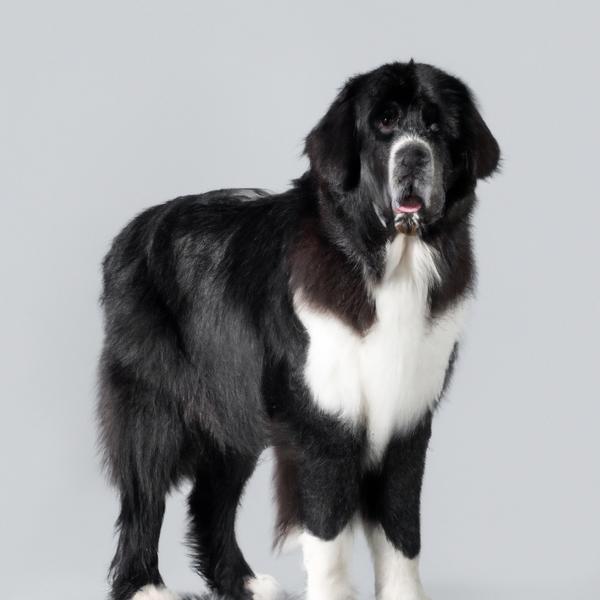
Border Newfie
Flat-Coated Retriever vs Border Newfie
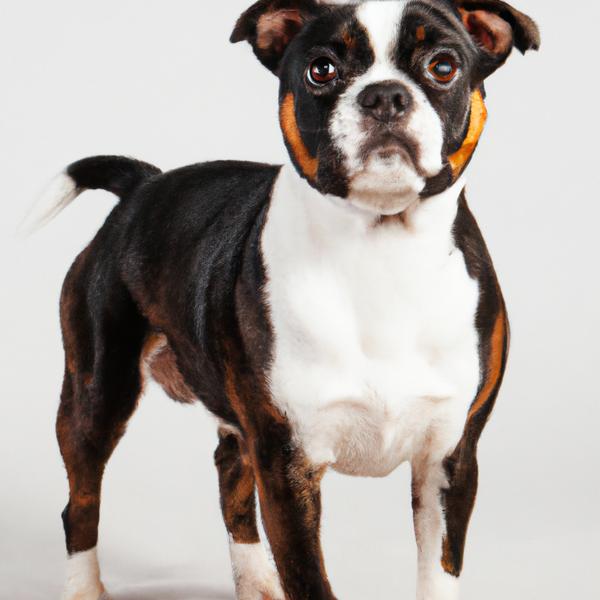
Bullhuahua
Flat-Coated Retriever vs Bullhuahua
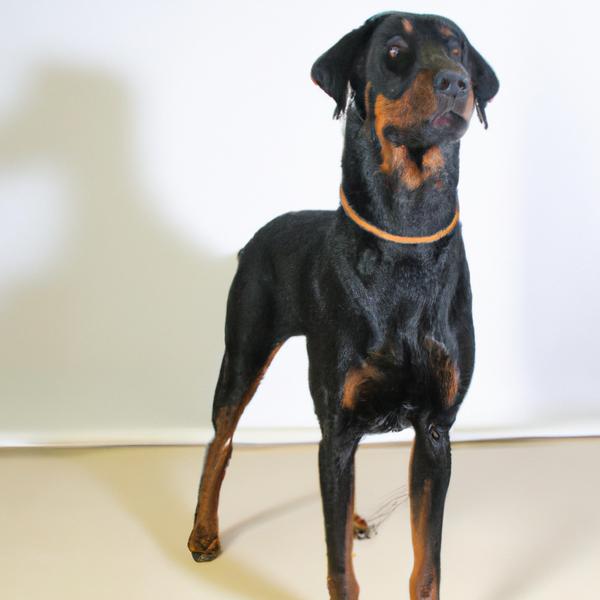
Weston
Flat-Coated Retriever vs Weston
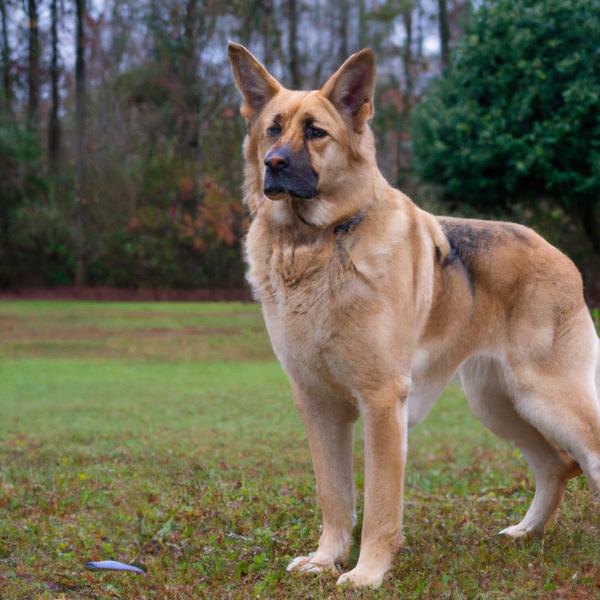
Golden Shepherd
Flat-Coated Retriever vs Golden Shepherd
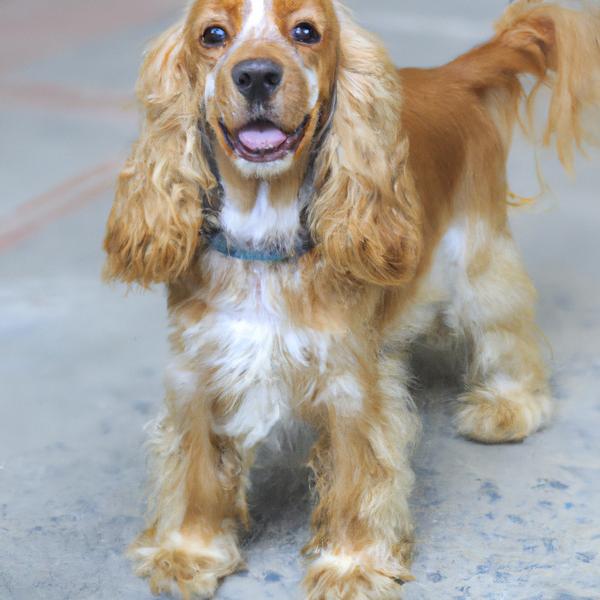
Cocker Jack
Flat-Coated Retriever vs Cocker Jack

Mali-dutchie
Flat-Coated Retriever vs Mali-dutchie
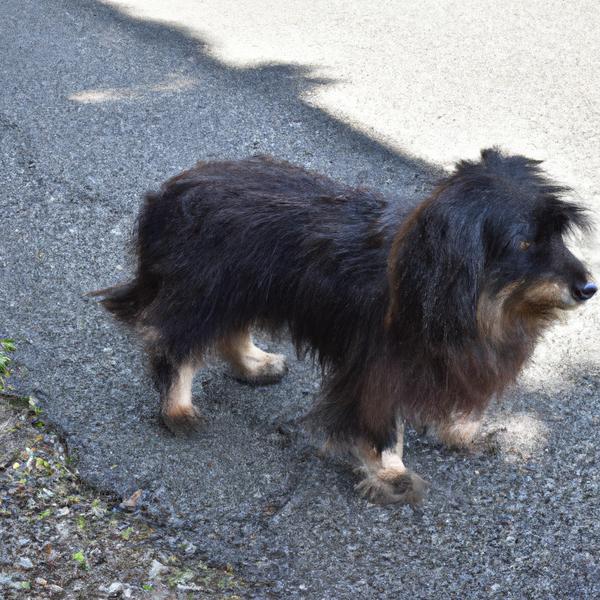
Schnese
Flat-Coated Retriever vs Schnese

Doxie-Pin
Flat-Coated Retriever vs Doxie-Pin
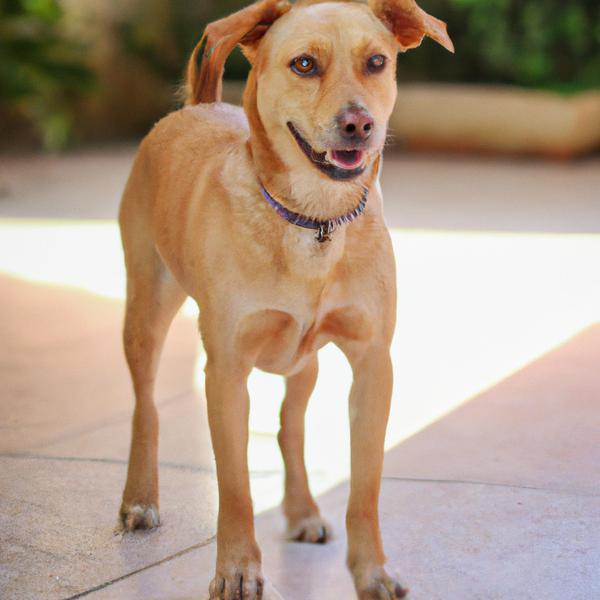
Labrahuahua
Flat-Coated Retriever vs Labrahuahua
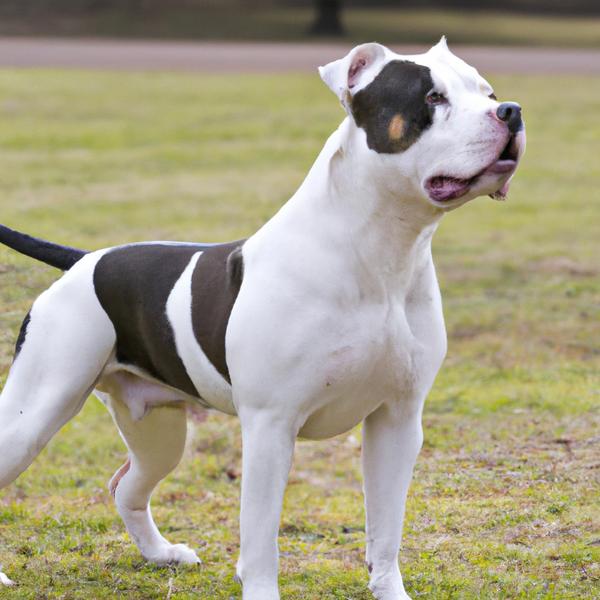
American Bull-Jack
Flat-Coated Retriever vs American Bull-Jack
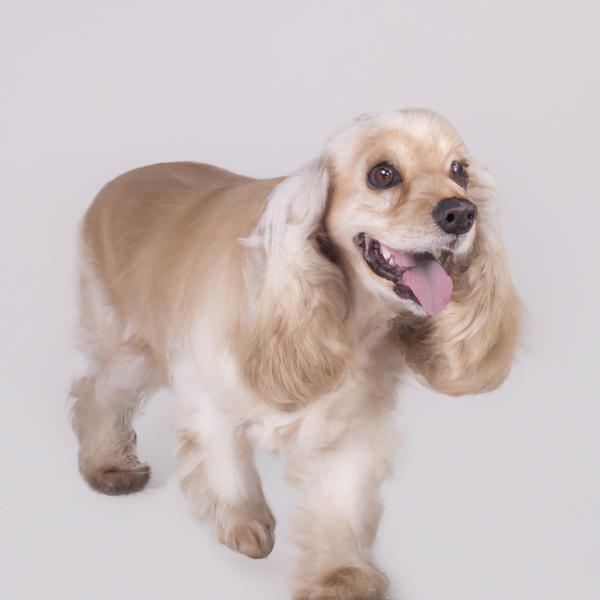
Lha-Cocker
Flat-Coated Retriever vs Lha-Cocker
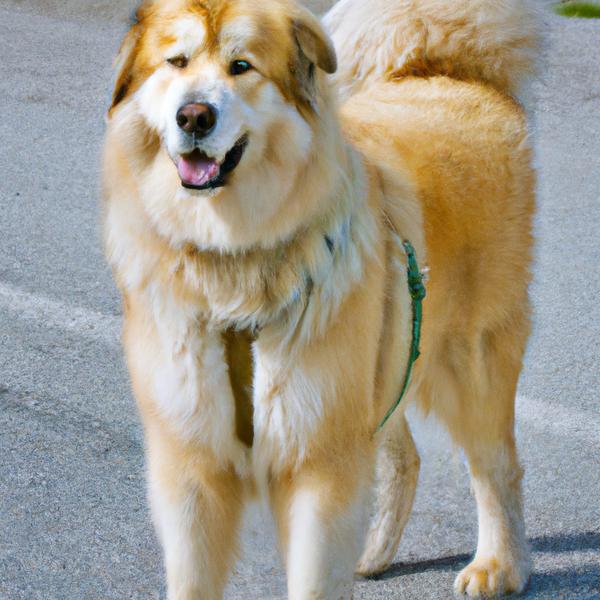
Alaskan Goldenmute
Flat-Coated Retriever vs Alaskan Goldenmute
